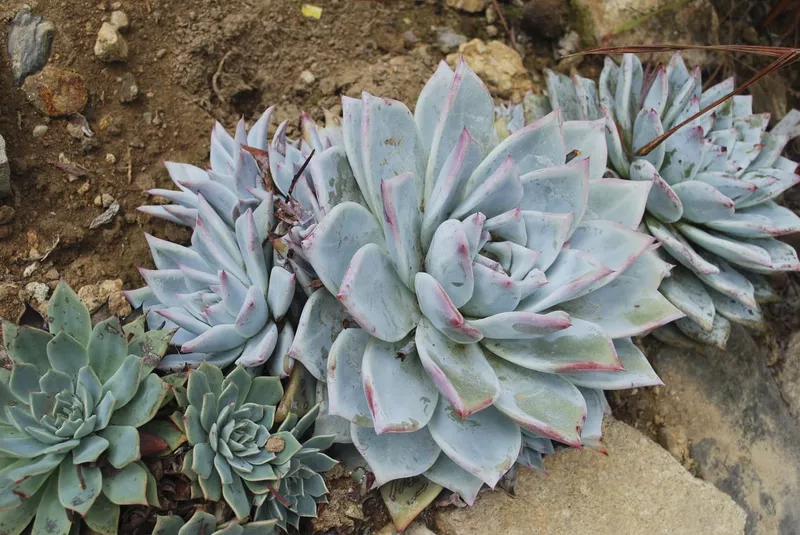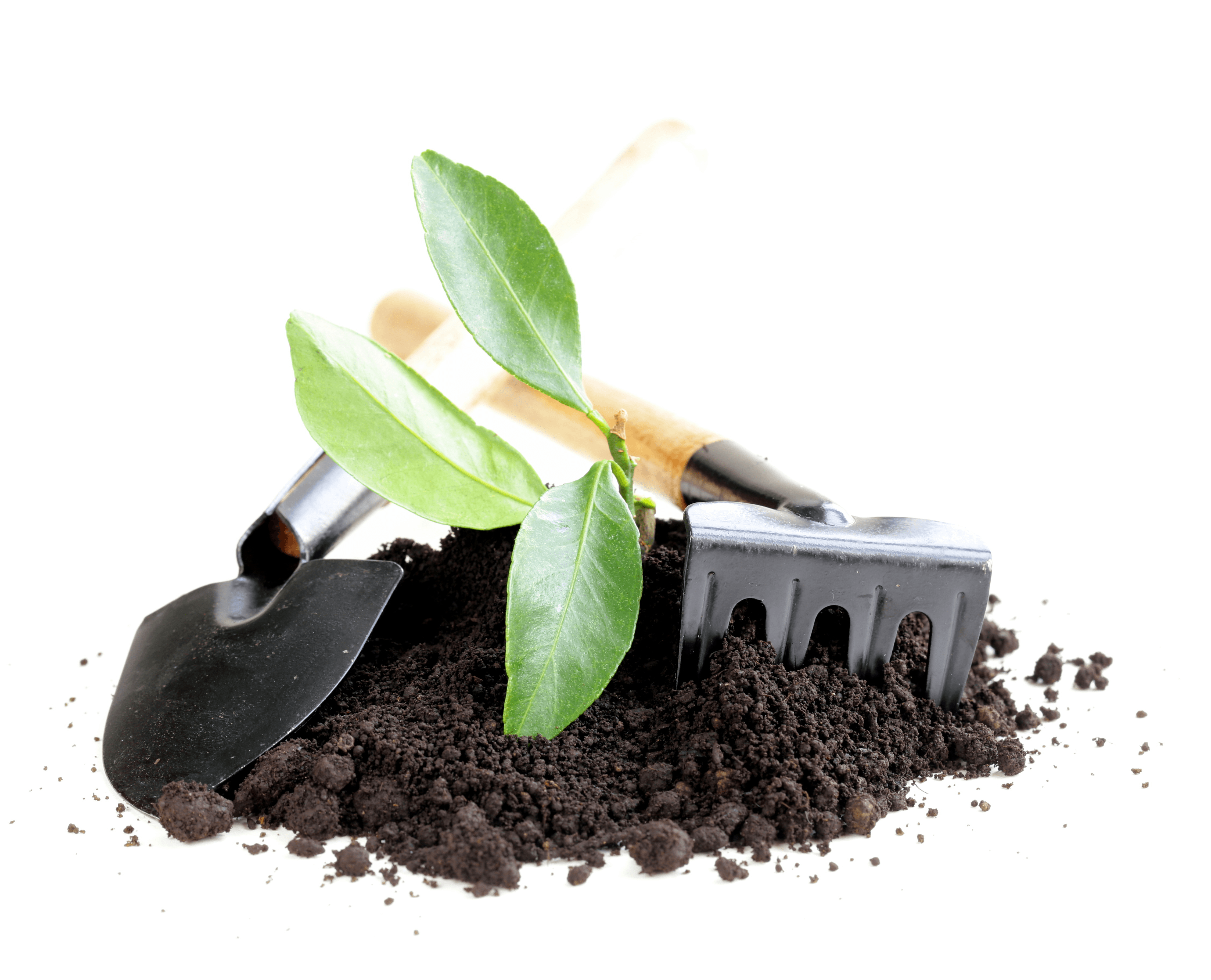Виды
Подтвержденные виды по данным сайта POWO на 2022 год:
- Dudleya abramsii Rose
- Dudleya acuminata Rose
- Dudleya albiflora Rose
- Dudleya anomala (Davidson)Moran — Дудлея аномальная
- Dudleya anthonyi Rose
- Dudleya arizonica Rose
- Dudleya attenuata (S.Watson)Moran
- Dudleya blochmaniae (Eastw.)Moran
- Dudleya brevifolia (Moran)Moran
- Dudleya brittonii Johanss.
- Dudleya caespitosa (Haw.)Britton&Rose
- Dudleya campanulata Moran
- Dudleya candelabrum Rose
- Dudleya candida Britton & Rose
- Dudleya crassifolia Dodero & M.G.Simpson
- Dudleya cultrata Rose
- Dudleya cymosa (Lem.) Britton & Rose
- Dudleya densiflora (Rose) Moran
- Dudleya edulis (Nutt.) Moran
- Dudleya farinosa (Lindl.) Britton & Rose — Дудлея мучнистая
- Dudleya formosa Moran
- Dudleya gatesii Johanss.
- Dudleya gnoma S.W.McCabe
- Dudleya greenei Rose
- Dudleya guadalupensis Moran
- Dudleya hendrixii S.McCabe & Dodero
- Dudleya ingens Rose
- Dudleya lanceolata (Nutt.) Britton & Rose
- Dudleya linearis (Greene) Britton & Rose
- Dudleya multicaulis (Rose) Moran — Дудлея многостебельная
- Dudleya nesiotica (Moran) Moran
- Dudleya nubigena (Brandegee) Britton & Rose
- Dudleya pachyphytum Moran & M.Benedict
- Dudleya palmeri (S.Watson) Britton & Rose
- Dudleya parva Rose & Davidson
- Dudleya pauciflora Rose
- Dudleya pulverulenta (Nutt.) Britton & Rose
- Dudleya rigidiflora Rose
- Dudleya rubens (Brandegee) Britton & Rose
- Dudleya saxosa (M.E.Jones) Britton & Rose
- Dudleya × semiteres (Rose) Moran
- Dudleya stolonifera Moran — Дудлея побегообразующая
- Dudleya traskiae (Rose) Moran
- Dudleya variegata (S.Watson) Moran
- Dudleya verityi K.M.Nakai
- Dudleya virens (Rose) Moran
- Dudleya viscida (S.Watson) Moran
Dudleya Farinosa Care
Size & Growth
This particular species vary in appearance. It’s either drab-looking or spectacularly bright and vivid.
It grows from a caudex, forming a basal rosette with wide, spade-like leaves.
These leaves are typically pale green and approximately 2.5” – 3” inches wide.
The leaves often have edges and tips of bright colors, especially shades of vibrant red. The pale green stem is erect with red or pink tinting through.
The stems are not exceptionally tall and are usually below 6” inches. However, some plants may grow up to 12” inches.
Flowering and Fragrance
Atop the tall stems are branching inflorescence bearing pale to bright yellow flowers.
The bloom time for the powdery dudleys is during spring or summer.
The non-fragrant flowers appear in candelabra-like clusters and add a pale lemony yellow contrast to bright foliage.
Light & Temperature
These plants don’t do well in hot climates, arid conditions, or drought. They are hardy in USDA Hardiness Zones 9 through 11b.
The minimum temperature they can bear in coastal winters is 20° degrees Fahrenheit (-7° C).
In summers, the highest tolerable temperature is 50° degrees Fahrenheit (10° C).
Direct sunlight in these regions may harm the plant. The optimal growing location is in partial shade.
Watering and Feeding
Watering the powdery liveforever plant is tricky. In their native habitats, they become dry when summer arrives.
This is why you must cut off watering to avoid drowning roots.
Water regularly once dry summers are over, and fall arrives.
If your dudleyas are looking gloomy in the growing season, use a succulent fertilizer.
Consult your local gardening center for further details.
Soil & Transplanting
Dry, rocky soil is the way to grow thriving North Coast dudleyas.
The soil should be well-draining to prevent root rot. Since the plant is salt resistant, soil with elevated salt levels are tolerated.
The typical succulent potting mix with good drainage works well.
They respond well to transplanting as they are quite resilient.
Remove some young offsets from an overgrown colony, with the roots intact, and plant in another pot or location.
As soon as soil contact is reestablished, the plants start growing.
Grooming and Maintenance
Dudleya Farinosa is very low maintenance.
You don’t have to deadhead the flowers or prune the foliage.
Just maintain good dry-moisture levels and regular division.
This will be enough for growing healthy plants.
Types of Dudleya Succulents
Let’s dive into the fascinating world of Dudleya varieties, each offering a delightful assortment of colors, shapes, and textures.
Dudleya brittonii
The ‘silver dollar plant’ (Dudleya brittonii) is a fantastic example of a solitary succulent. It forms compact, neat plants with slender leaves that are covered in a white, waxy coating called farina. While some plants may not have this gray coating, they are not as popular. The leaves have a watery sea-green color and a waxy bloom covering.
During late winter to spring, Dudleya brittonii produces bright red, showy flower stems adorned with starry, pink-bracted yellow or orange flowers. As the plant matures, old dead leaves hang on, creating a rough “tutu” on the main stem. This species is commonly cultivated and resembles a chalky gray echeveria (Dudleya pulverulenta), but Dudleya brittonii grows larger, eventually forming a solitary rosette up to 50 cm in diameter.
Dudleya edulis
Dudleya edulis, also known as ladyfingers, fingertips, or the mission lettuce, is a perennial succulent plant that’s full of character. Its leaves are like green, fleshy fingers that can reach a height of about 8 inches when fully grown. You’ll often find these leaves arranged in rosette clumps on the ground, creating a charming display.
During the summer months, Dudleya edulis shows off its beautiful flowers. These flowers bloom on branches that can grow up to 20 inches tall. The flowers themselves are a lovely combination of white and cream colors, adding a touch of elegance to this unique succulent.
Dudleya gnoma
Dudleya gnoma, also known as the munchkin liveforever or munchkin dudleya, is a rare succulent plant. It wasn’t officially described by scientists until 1997, but gardeners and succulent enthusiasts keep it in cultivation. This species is known for its small size and unique charm.
Dudleya ingens
Dudleya ingens is an incredibly variable species. Over time, it develops a short, simple or few-branched caudex (trunk) that can reach up to 12 inches in height or more, with a thickness of 1-2 inches. The upper part of the caudex is densely covered with the bases of old persistent leaves. With age, some plants may develop shrubby stems.
Dudleya pulverulenta
Dudleya pulverulenta, also known as the Chalk Dudleya, belongs to a large group of succulents in the stonecrop family (Crassulaceae). It is a perennial plant forming a rosette of succulent leaves from a thick caudex. Its silvery-white color comes from a coating of fine white mealy powder. The dense, white, mealy powder or chalky wax also occurs on sepals, stems, leaves, and the underside of flowers.
Rosettes send up long, arching flower spikes in late spring. Dudleya pulverulenta is one of the largest and most distinctive species of the genus, easily recognizable from a distance, even without flowers.
Dudleya saxosa subs. collomiae is a succulent perennial herb with a short, thick caudex measuring 1-2 inches in thickness. It grows in clumps, bearing 5-10 rosettes. This subspecies is well-isolated and polyploid, similar in shape to the diploid subsp. aloides, but it has larger flowers.
The flowers of Dudleya collomiae are yellow, including the petals and anthers. When immature, flower parts have a light pink tinge. Dudleya saxosa ssp. aloides (panamint liveforever) has lavender to pink flowers.
Dudleya virens
Dudleya virens is a species of perennial succulent plant that branches out and forms cushions of densely clustered rosettes, reaching a diameter of at least 16 inches. The fleshy strap-shaped leaves are flat, non-viscid, and measure approximately 3-8 inches long and 0.6-1.2 inches wide. They taper from the base (or near the middle) and can be green or grayish with reddish tips.
Thick leafy red flower stems emerge from the plant’s center, supporting candelabras of fragrant white or rosy flowers. These flowers have five petals that spread out from the middle.
Что такое растения Дудлея?
Дудлея суккуленты — маленький род; некоторые похожи на эхеверию. Группа включает от 40 до 50 различных типов, большинство из которых проживают в западных штатах США и Мексике. Некоторые растут на островах в этих областях и, возможно, в Южной Америке.
Привлекательные, крепкие и долгоживущие, суккуленты Dudleya часто имеют маленькую очаровательную розетку. Это происходит на ветвях по мере взросления. Это растение растет в различных формах и имеет ряд привычек. Это может быть разветвленным или неразветвленным, и не растет из его листьев. Он может размножаться только из семян, черенков или делений, поэтому доступны не все сорта Дудлея.
«LiveForever» или гигантский мел — это обычные названия растения.
Дудлея Уход
В правильной среде суккуленты Дудлея становятся выносливыми и долгоживущими растениями. Они предпочитают много солнечного света и хорошо дренированную почву. Вы можете рассмотреть эти растения для своего сада камней или в качестве уникального экземпляра для добавления в свою коллекцию.
Растения дудлеи имеют порошкообразный вид из-за воскового слоя, называемого фариной. В результате растение имеет естественную защиту от чрезмерного пребывания на солнце или плохой погоды. Ухаживая за растениями дудлеи, постарайтесь не беспокоить фарину чрезмерным прикосновением к растению или поливом листвы.
К распространенным вредителям относятся тля, мучнистые червецы, мошки и слизни. Эти растения также подвержены гниению. Поэтому лучше всего сажать эти суккуленты под углом, чтобы любая вода, оставшаяся внутри листвы, могла стекать. Это также имитирует естественную среду обитания растения, поскольку многие виды дудлеи растут на крутых скалистых отвесах.
Некоторые сорта охраняются законом из-за их редкости. Известно, что браконьеры охотятся за сортами дудлеи. Обязательно покупайте растения в авторитетном садовом центре.
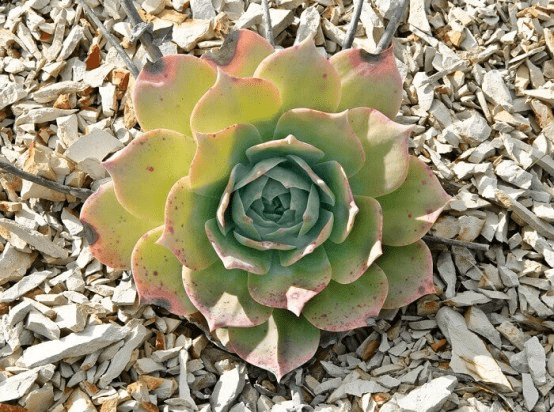
Распространение
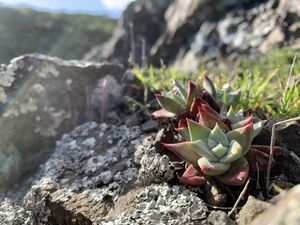
Дудлея мучнистая и её естественная среда обитания.
Природный ареал: юго-западная часть Северной Америки: штаты США: Аризона, Калифорния, Невада, Орегон, Юта и Северо-запад Мексики и Мексиканские острова Тихого океана.
Виды Дудлеи широко распространены и разнообразны по своему ареалу, но обычно их можно найти на выходах скал, скалах или выемках дорог, где их листья помогают им хранить воду в условиях, слишком сухих для большинства видов растений. Большинство из них маленькие и незаметные, когда не цветут. Две преобладающие среды обитания, где можно найти растения этого — это побережье или горы. Дудлея предпочитает умеренные температуры, летний покой, зимние осадки и каменистые места обитания, а это означает, что их можно найти в различных, разрозненных местах, от океанических утесов на побережье Калифорнии до небесных островов в Аризоне.
Глоттифиллум (Glottifillum)
Это низкорослый суккулент принадлежит семейству Аизооновых. Родиной его считается Южная Африка, но растение встречается и в других засушливых и жарких районах. В домашних условиях культивируют 11 видов из 60 существующих.
Суккулент растет очень медленно, достигает в высоту лишь 15-16 см. Листья толстые, цилиндрические. Растут обычно в два ряда. Цвет листьев варьируется от светло-зеленого до темно-изумрудного. Некоторые виды имеют восковой налет, который защищает от сильного солнечного излучения.
- У Глоттифиллума очень красивые цветы, причем цветение происходит дважды в год – в начале лета и осенью. Цветы крупные, диаметром до 6 см, на небольших цветоносах. Соцветия напоминают одуванчики, и имеют белый, желтый, оранжевый окрас.
- Суккулент сажают в субстрат, предназначенный для суккулентов и кактусов. Если почва недостаточно рыхлая, то добавляют немного крупнозернистого песка. Можно составить субстрат самостоятельно из равных частей дерновой земли, торфа и песка. Обязательно на дно емкости надо насыпать слой дренажа.
- Суккулент хорошо чувствует себя на южных окнах, где много света. Но от прямых полуденных лучей его лучше притенять. При скудном освещении растение останавливается в росте и может заболеть.
- В летнее время прекрасно подходит температура от 23 до 30 градусов, что соответствует комнатной температуре в это время. В зимний период оптимальные показатели температуры воздуха от 14 до 16 градусов. Не стоит ставить его у батарей отопления. Нельзя опрыскивать этот суккулент.
- Поливают Глоттифиллум теплой мягкой водой, не заливая розетку. Летом полив проводят 2-3 раза в месяц, зимой через 30-35 дней, не допуская перелива.
- С середины весны и все лето добавляют подкормки два раза в месяц комплексными удобрениями, осенью их сокращают до 1 раза, зимой не подкармливают совсем.
Три вида этого растения наиболее подходят для содержания в комнатных условиях. Это Глоттифиллум языковидный, Глоттифиллум малоплодный, Глоттифиллум крестовидный.
Congratulations on joining as a free Member of Remodelista, Gardenista and The Organized Home! You now have access to many great features across the sites:
- Access to all posts published in the past year
- Access 10 archived posts (older than one year) per month on each site
- Use of our internal bookmark tool, so you can save products, posts, and other pages for quick reference
- Access to our community bulletin board so you can ask and answer design-related questions
- Unlimited access to the Product Catalogs, Design Travel sources, and Architect & Designer Directory listings
- Choose from our ten newsletters to keep up with the latest on the sites
If at any time you want to become a Subscriber and enjoy unlimited, ad-free access to all our content, just go to the My Account link and choose Subscribe.
How often should dudleya be watered and what is the best method?
Dudleya is a genus of succulent plants that belong to the Crassulaceae family. These plants are native to the Western United States and Mexico and are known for their beautiful rosette-shaped leaves and stunning flowers. If you have recently purchased a dudleya or are planning to grow one, you may be wondering how often to water it and what the best method is. In this article, we will discuss the watering needs of dudleya and provide you with the best practices to keep your plant healthy and happy.
Dudleya plants are desert succulents, which means they can withstand long periods of drought. They have adapted to survive in arid conditions by storing water in their leaves, stems, and roots. Overwatering can be detrimental to dudleya plants and can cause root rot, which can be fatal. It is important to strike a balance between giving your plant enough water and not overdoing it.
The frequency of watering your dudleya plant will depend on various factors such as the climate, season, potting mix, and the size of your plant. As a general rule, dudleya plants should be watered sparingly. During the summer months when the temperatures are higher and the plant is actively growing, you can water your dudleya once every 2 to 3 weeks. However, during the colder seasons or when the plant is dormant, you can reduce the frequency of watering to once every 4 to 6 weeks.
When it comes to watering methods, it is best to use the ‘soak and dry’ technique. This means thoroughly watering the plant until water drains out of the bottom of the pot and then allowing the soil to dry out completely before watering again. Avoid misting the leaves or spraying water directly on the plant as this can lead to fungal diseases and rot.
To water your dudleya plant, follow these simple steps:
- Choose a well-draining potting mix specifically designed for succulents. This will ensure that excess water can easily drain out.
- Place your dudleya plant in a sunny spot where it can receive at least 4 to 6 hours of sunlight per day.
- Check the soil moisture level by inserting your finger about an inch into the potting mix. If the soil feels dry, it is time to water your plant.
- Water your dudleya thoroughly, allowing water to run through the drainage holes. Make sure not to let the plant sit in standing water.
- Wait for the soil to dry out completely before watering again. This may take anywhere from a few days to a few weeks, depending on the conditions.
By following these watering guidelines and providing your dudleya plant with the right amount of water, you can ensure its overall health and longevity. Remember, it’s better to underwater than overwater your dudleya, as it is more tolerant of drought than excessive moisture. Observing your plant’s behavior and adjusting the watering frequency accordingly is key to keeping your dudleya thriving. With proper care and attention, you can enjoy the beauty of these unique succulent plants for years to come.
Final Words
Dudleya Gnoma, with its attractive look and rugged character, is highly valued among succulent enthusiasts. Ongoing love and respect for this species and committed efforts to protect it are crucial to preserve the plant globally.
What do you think about this plant? Let me know in the comment section below! Also, here are my suggestions for exploring new plants in SucculentCity
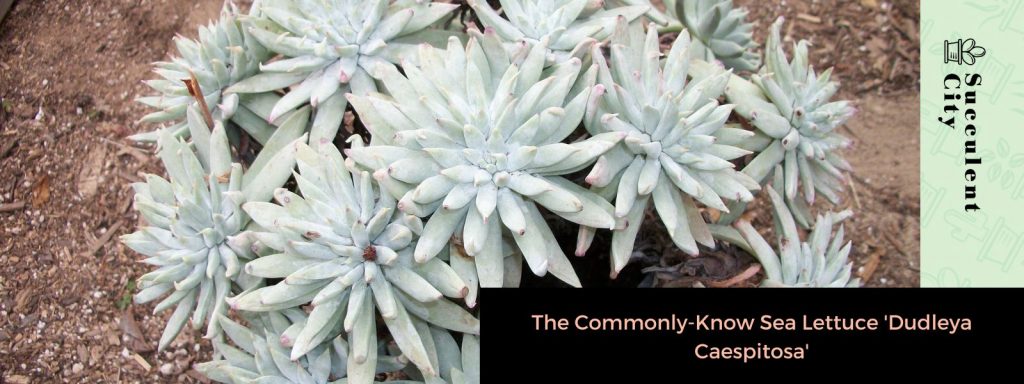 << Previous Plant: The Commonly-Know Sea Lettuce ‘Dudleya Caespitosa’
<< Previous Plant: The Commonly-Know Sea Lettuce ‘Dudleya Caespitosa’
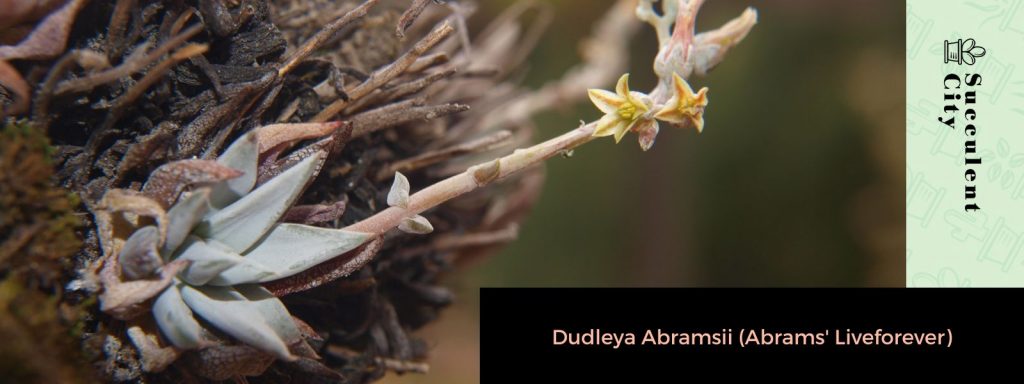 >> Next Plant: Dudleya Abramsii (Abrams’ Liveforever)
>> Next Plant: Dudleya Abramsii (Abrams’ Liveforever)
Succulent City
Hey everyone! Welcome to Succulent City! We are all about succulents, cacti, and a bit about air plants. Ten years back, in 2013, we began the journey with succulents. It started as a simple hobby, crafting and selling charming succulent-themed pins and decorations. But as time passed, our fascination with these remarkable plants grew, and we gained extensive knowledge about them. Therefore, Succulent City is the blog as you see it is now. Enjoy your visit and happly planting!
Dudleya Farinosa Uses
Native to sunny California in the USA, these plants look incredible out in front of beachfront properties.
They are also great for xeriscaping.
Either way, the striking red foliage and the plant’s uniqueness make it a fantastic addition to any garden setting.
They are used in some pen landscapes to attract hummingbirds and other pollinators.
The plant is also a favorite as a house plant in coastal regions.
People also add it to succulent terrariums with other plants which can tolerate similar climates.
In fact, it is quite appreciated in Asia, specifically in China and South Korea.
Interestingly enough, in 2019, The California Department of Fish and Wildlife reported hundreds of bluff lettuce plants had been stripped from California coastal regions and sold overseas.
This is why 40 or so Dudleya species, including farinose are protected by the state and California Native Plant Society.
Посадка и пересадка Дудлеи
Неветвящиеся сорта Дудлеи — идеальные экземпляры для выращивания в контейнерах. Если вы решите выращивать эти растения этим методом, обязательно выберите горшок с дренажными отверстиями и используйте только хорошо дренированную почву. Хотя растениям, выращенным в контейнерах, потребуется немного больше воды, чем растениям, выращенным в саду, вы все равно должны следить за тем, чтобы почва полностью просыхала между поливами. Если растение перерастает свой контейнер, аккуратно удалите растение и либо разделите его, либо поместите в контейнер, который на несколько сантиметров больше.
Авония (Avonia)
Компактное растение из семейства портулаковых. В природе произрастает в районах Южной Африки. Растение имеет ветвящиеся побеги, покрытые чешуйками. Листья очень мелкие и спрятаны под прилистником, чтобы их рассмотреть понадобится увеличительное стекло.
Корневая система представляет собой небольшие клубни. Со временем побеги вытягиваются и ниспадают вниз, как ампельных растений. Цветет нежными белыми и желтоватыми цветами. Иногда встречаются виды с другими расцветками. Растение самоопыляющееся, в домашних условиях дает семена.
- Любит круглогодичное освещение рассеянным светом.
- Лучшее место для Авонии – восточные и западные окна. Летом и весной предпочтительна температура от 20 до 25 градусов, зимой и осенью температуру снижают до 10-15 градусов.
- Довольствуется сухим воздухом квартир, не требует дополнительного увлажнения. Полив Авонии производится после того, как земляной ком полностью просох после предыдущего полива.
- Удобряют 1 раз в месяц жидким удобрением для кактусов. Подкормку вносят в весенне-летний период.
- Поскольку Авония растет очень медленно, то в пересадке она нуждается редко, раз в несколько лет и после покупки в магазине. Ей нужен неглубокий горшок, заполненный смесью из равных частей глины, листовой земли, песка и толченого древесного угля, либо покупного грунта для кактусов и суккулентов.
Самые распространенные и декоративные виды: Авония Квинария, Авония Бумогоподобная, Авония Албиссима, Авония Мейера.
Dudleya Care Guide
Caring for Dudleya succulent plants can be easy. This is because they are low maintenance. They are protected by a substance called the Farina. The succulent farina is what gives the plant its powdery look. It provides protection from excess sunlight exposure.
In addition to that, the watering requirements are low. This is because of its succulent leaves which retain water.
Dudleya Light Requirements
The best lighting for your powdery liveforever plant would be full sunlight. They are less susceptible to damage from the sun. And can survive up to 6 to 7 hours of full sun.
You can grow them outdoors, in a rock garden. There they can get all the access to sunlight they require. If you must grow them indoors, then keep them next to a south-facing window.
They can also be grown in areas with partial shade or filtering. But be careful as too little light can lead to legginess. Or overall stunted plant growth.
Dudleya Water Requirements
The liveforever plant has a weird growth habit. They go dormant during the summer season. At this stage, it is recommended that you avoid watering the Dudleya. You might need to wait for the fall season before resuming watering.
During the fall and less hot seasons, water the Dudleya once a month. Always use rainwater, as tap water can be harmful to the plant. And succulents don’t like overwatering as they are susceptible to root rot.
Before watering, check the moisture level of the plant. Be sure it is almost dry, to avoid over-watering.
Dudleya Soil Requirements
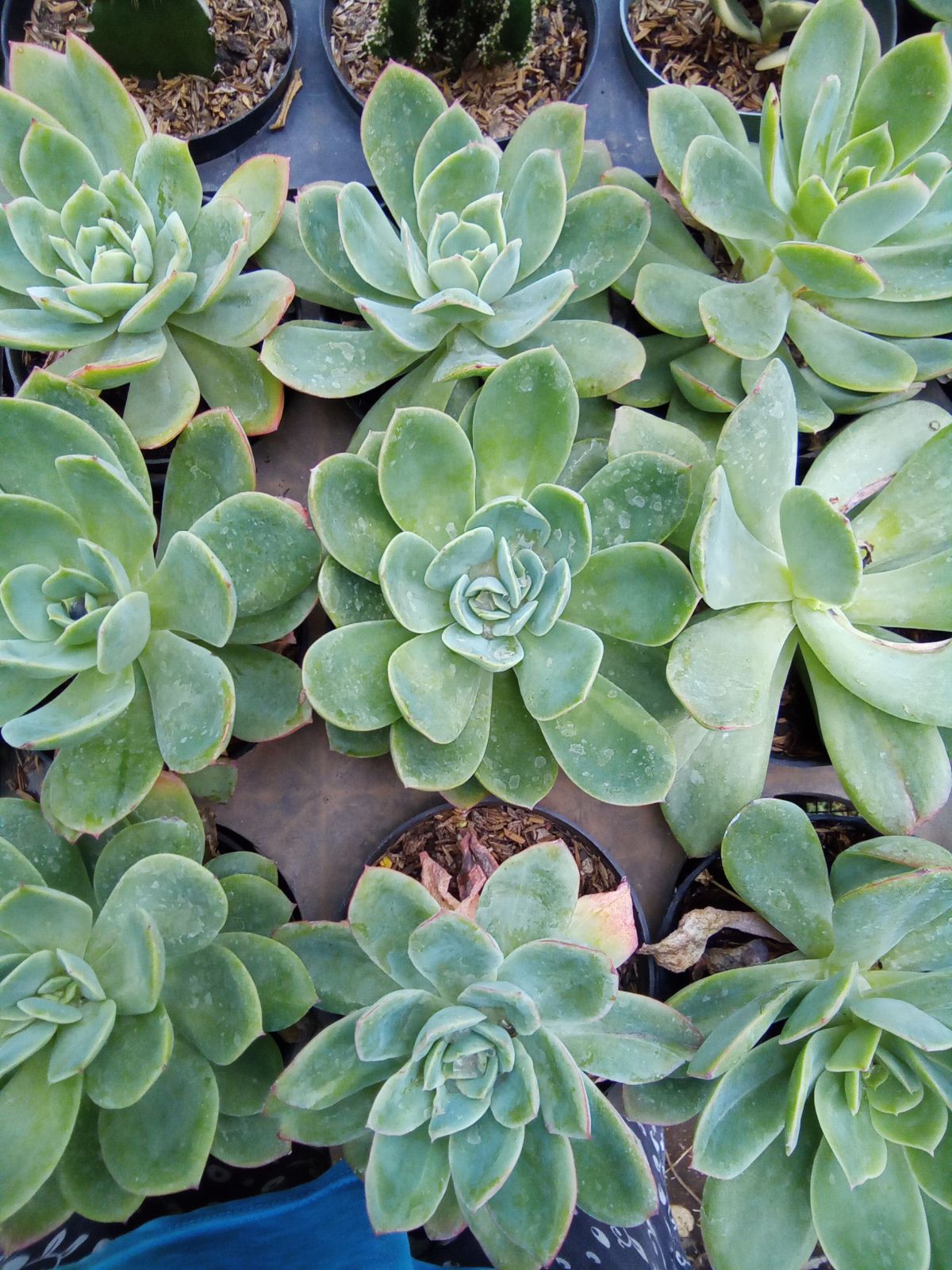
The Dudleya farina plant requires well-draining soil to flourish. This is because they are susceptible to root rot and as such hate soggy soil. Sandy soil is most ideal for growing Dudleyas.
You can also grow them on rocky cliffs. The soil should be a little rich, so add very little compost. Keep the soil acidity between a little acidic and a little alkaline.
Temperature and Humidity Requirement For The Dudleya
As North American plants, they live forever succulent and love medium humidity. A range between 40% to 50% should be ideal. But do not mist them often, as they do not react well to regular misting.
Temperature should be kept above 40 degrees Fahrenheit. They are a little cold and hardy and can survive hot temperatures too.
Fertilizer Requirements For Dudleya
Fertilizers aren’t essential to the Live forever plant care. Adding little compost to their initial soil should be more than enough.
If you must add fertilizers, then limit it to once a month in the fall or spring season. The summer season is when they go dormant so avoid fertilizers then. And always make use of liquid slow-release fertilizer. Ensure you dilute it to half of its initial strength.
Propagating Dudleya
The best way to propagate the Dudleya would be through stem cuttings. This should be done in the spring season. And ensure you sterilize all tools before using them.
Часто задаваемые вопросы
До каких размеров вырастает дудлея?
В зависимости от сорта эти суккуленты могут достигать 45 сантиметров в ширину и 60 сантиметров в высоту, включая высокие цветочные стебли.
Какой климат лучше всего подходит для дудлеи?
Постарайтесь максимально воспроизвести естественную среду обитания растения. Для справки: типичные условия после сухого жаркого лета и прохладной мягкой зимы. Дайте этим растениям много солнечного света и песчаную, каменистую, хорошо дренированную почву. Скалистые утесы также являются отличным местом для выращивания этих суккулентов.
голосів
Рейтинг статьи
Поделиться в соц сетях
Вода
Поливайте растения дудлеи только тогда, когда почва почти сухая. Слишком частый полив может привести к заболачиванию почвы. Лучше вообще не поливать эти растения в летние месяцы, так как они впадают в спячку и хорошо растут в засушливых условиях. Увядание в это время является нормальным. С наступлением осени вам может понадобиться подача воды, если дождь будет редким.
Решая, поливать ли дудлею, убедитесь, что растение заранее пережило засушливый период. После полива подождите, пока почва высохнет, прежде чем снова поливать. Это может потребоваться сделать один раз в месяц или реже. Когда вы даете воду, делайте это глубоко и только у корней, так как суккуленты плохо переносят мокрую листву.
